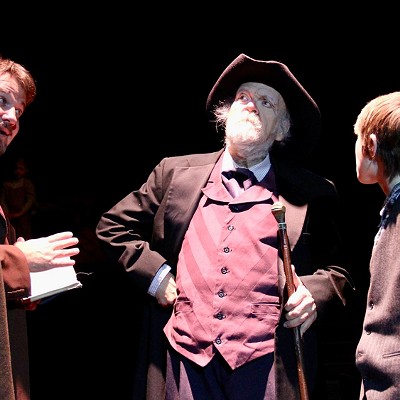Cassi hops on her bike, while her roommate is in a car.
“A lot of times, I beat her or we get there at the same time,” Poor said. “I might beat her because she is having to look for parking and I don’t.”
Poor has become a regular cyclist over the past year, since she decided to commute from her midtown home to her downtown office by bike.
“I’m not a professional [cyclist] by any means,” Poor said. “But last year, I just decided that I wanted to buy a bike. I just realized that I can get from my home to work faster, or at least the same time as it takes me to drive, park in the parking garage, walk down the garage. On a bike, I can go door to door.”
Like most American cities, the majority of residents in Oklahoma City commute by automobile. The League of American Bicyclists reports that just 0.2 percent of OKC commuters travel by bike. However, that rate is a 67-percent increase since 2000, as more commuters like Poor have decided to take up biking.
“There is something really nice about being on your bike,” Poor said. “You can let the wind blow through your hair, and you have a little more time to experience the things you ride by.”
More cyclists on the road point to the city’s stronger embrace of biking in recent years. So does an increase in biking infrastructure. OKC might not have a cycling community on par with cities like Portland, Ore. or Seattle, but the city is taking steps to make commuting by bike easier to do.
“We are experiencing the same thing that the rest of the country is, which is a push to provide more infrastructure for pedestrians and cyclists,” said Randy Entz, OKC’s transportation planner.
Project 180, a major streetscape construction project downtown, is expected to add more dedicated bike lanes and bike racks. The city is also adding bike signage, painted sharrow markers on streets and some bike lanes as it reconfigures some streets through the Complete Streets program.
Entz said the city is working toward improving cycling infrastructure, which is driven by community engagement.
“Any public support we can get for cycling is what’s going to drive it,” Entz said. “The more we have people out there wanting these things and communicating these things to their councilperson, the more we are going to do it.”
Entz said cyclists have become louder in recent years, but it’s still not a powerful lobbying group.
“I still think there is not a unified voice of cyclists out there because there are all different types,” Entz said. “It’s the everyday rider that maybe rides from
Heritage Hills to downtown; there is no one voice that represents them. It would be good to have a good representative.”
Eric
Dryer isn’t necessarily trying to be that “one voice.” But his efforts
to write about cycling in OKC and promote it as a form of transit is
giving a voice to the local cycling community.
“I’ve always been
someone who rides their bike,” said Dryer, who authors a blog called
Bike OKC. “I live downtown, so I ride my bike to work every day and
figured that I enjoy it, so why not try and convince other people to
ride their bikes?” Dryer blogs about cycling through the city and has
created bike route maps and other resources for the urban cyclist.
“I
needed something else to do besides work, and it was not only a good
way to work on my writing but talk about biking and things I find
interesting,” Dryer said. “I thought, ‘If I could convince five more
people to ride their bike to work, then I’ve succeeded.’” Dryer is
having success. Not only has he created a network of other cyclists from
across the city, but also he said a group of his friends recently
purchased bikes in part because of his inspiration.
Shane Hampton is another urban cyclist who began commuting by bike a few years ago between his OKC home and classes in Norman.
“I
was commuting to Norman, so I decided to get a bike and try to ride
from my house to the downtown [OKC] bus station and load it on the bus
to Norman,” Hampton said. “I could read and study on the way to Norman
instead of dealing with the traffic.”
Hampton said he began to realize that many of his other trips were closer to home and it made sense to bike rather than drive.
“I started to realize that most of the things I do are within one or two miles,” Hampton said.
Hampton
is currently a fellow at The Institute for Quality Communities at the
University of Oklahoma, and he splits his time between OKC and Norman.
Taking the bus to Norman no longer works for his schedule, but he tries
to commute by bicycle for most of his OKC trips.
“[The
bus] works really well if you have a flexible schedule, but it doesn’t
really work if you need to go back and forth a lot between the cities at
random times throughout the day,” Hampton said.
Like
Poor and Dryer, Hampton said biking in Oklahoma City is easier than
some might expect. The city’s grid pattern allows cyclists to avoid
busier streets, and the increase in biking signage in recent years has
made motorists more aware of cyclists, Hampton said.
“Just
this spring, I have really noticed a ton of people biking around town,
and I think it’s really corresponded to increased presence of sharrows
(bike signs on streets),” Hampton said. “There has been a lot of efforts
to at least increase the visibility of cycling, and I think that’s
helping.”











